A Backup Knot is usually tied after another knot to keep it from untieing. In case the main knot unties, the backup knot will keep the end of the rope from slipping through it.
Usually, a Half Double Fisherman’s Knot (Double Overhand Stopper Knot) is used for this purpose, which we’ll show in the illustration below.
Quick Guide: Tying A Backup Knot
To tie a Backup Knot, place the working end on the right side parallel to the standing end. Then place your left thumb over the standing end, and wrap the working end twice around it. Next, take out your thumb and feed the working end through both of these loops.
Before tightening the knot, in a loosened form, move it as close to the main knot as you can. Then tighten the Backup Knot by pulling the working end opposite to the main knot.
Keep the working end at least a few inches long to account for slippage under shock loads.
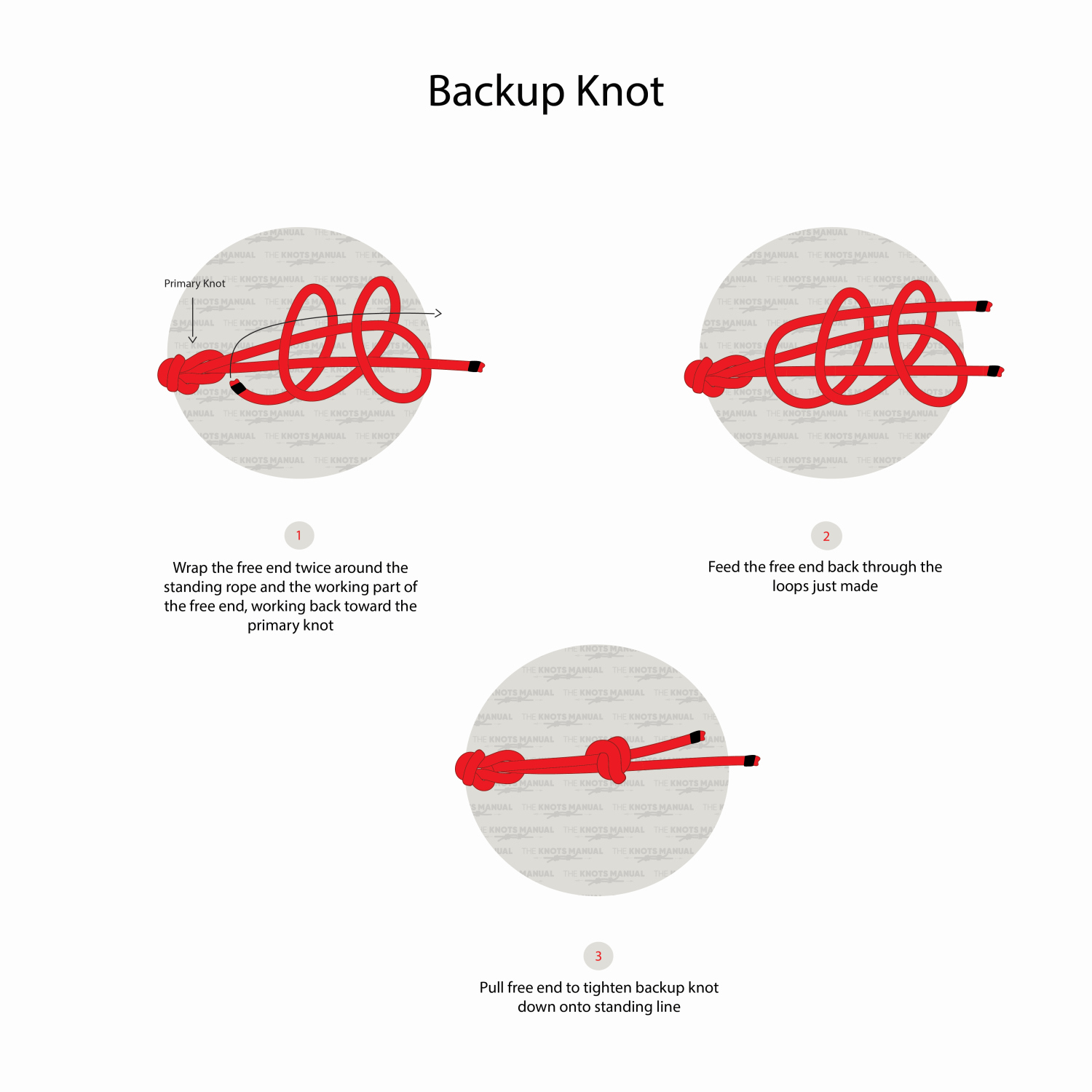
Pros and Cons of the (Double Overhand) Backup Knot
The Double Overhand Stopper Knot is very easy to tie if you use the thumb technique. With a bit of practice, you tie this knot in just a few seconds.
It’s a very reliable stopper knot. If you tie this Backup Knot after other knots, then they can be easily used in critical applications, like rock climbing and search and rescue.
This Backup Knot is also somewhat easy to untie because usually, it isn’t loaded with shock weight unless the main knot fails.
Its only downside is that it can become hard to untie if tied right next to the Backup Knot. But with a bit of twisting and patience, it isn’t impossible to untie.
Other stopper knots may be used as Backup Knots as well, like the Stevedore Stopper Knot or the Overhand Stopper Knot. But the Double Overhand Knot offers the best balance between reliability and ease of use.
Common Uses for the Backup Knot
Most commonly the Half Double Fisherman’s Backup Knot is used in rock climbing, mountaineering, caving, and search and rescue.
It’s tied after other knots to make them more reliable in life-threatening situations. It’s very commonly tied after the Figure 8 Follow through Knot to tie into a climbing harness. It’s also tied after the Figure 8 Bend when connecting two ropes. But it can be tied after any knot where the end exits parallel to the standing line.
The Double Overhand Backup Knot is also used to form other knots, like the Double Fisherman’s Knot. In this case, two Backup Knots opposite to one another are formed to connect two ropes.
Knots Like the (Half Double Fisherman’s) Backup Knot
Overhand Knot: A simpler version of the Double Overhand Stopper Knot that can also be used as a backup knot. It’s less reliable because it’s based on a single wrap around the standing line, instead of two. One benefit is that it’s easier to untie.
Stevedore Stopper Knot: This knot is perfect to use as a Backup Knot. It’s just as strong as the Double Overhand Stopper Knot, only easier to untie. It can also be tied around the standing end of the rope. The Stevedore Stopper Knot is also tied very similarly to the Double Overhand Backup Knot.
Ashley Stopper Knot: This is a very secure and bulky stopper knot. But it can’t be tied around another rope, so it can only be used after knots where the end exits as a single stand.
Figure 8 Knot: This stopper knot usually is tied only with a single rope. In this case, it’s a good stopper knot to use because it’s easy to tie, reliable, and it doesn’t jam.
Double Fisherman’s Knot: This knot consists of two Double Overhand Backup Knots, tied opposite to one another. It offers a very secure way of connecting two ropes. It’s often used to create a Prusik Loop.
Step-By-Step Guide: How to Tie a Backup Knot
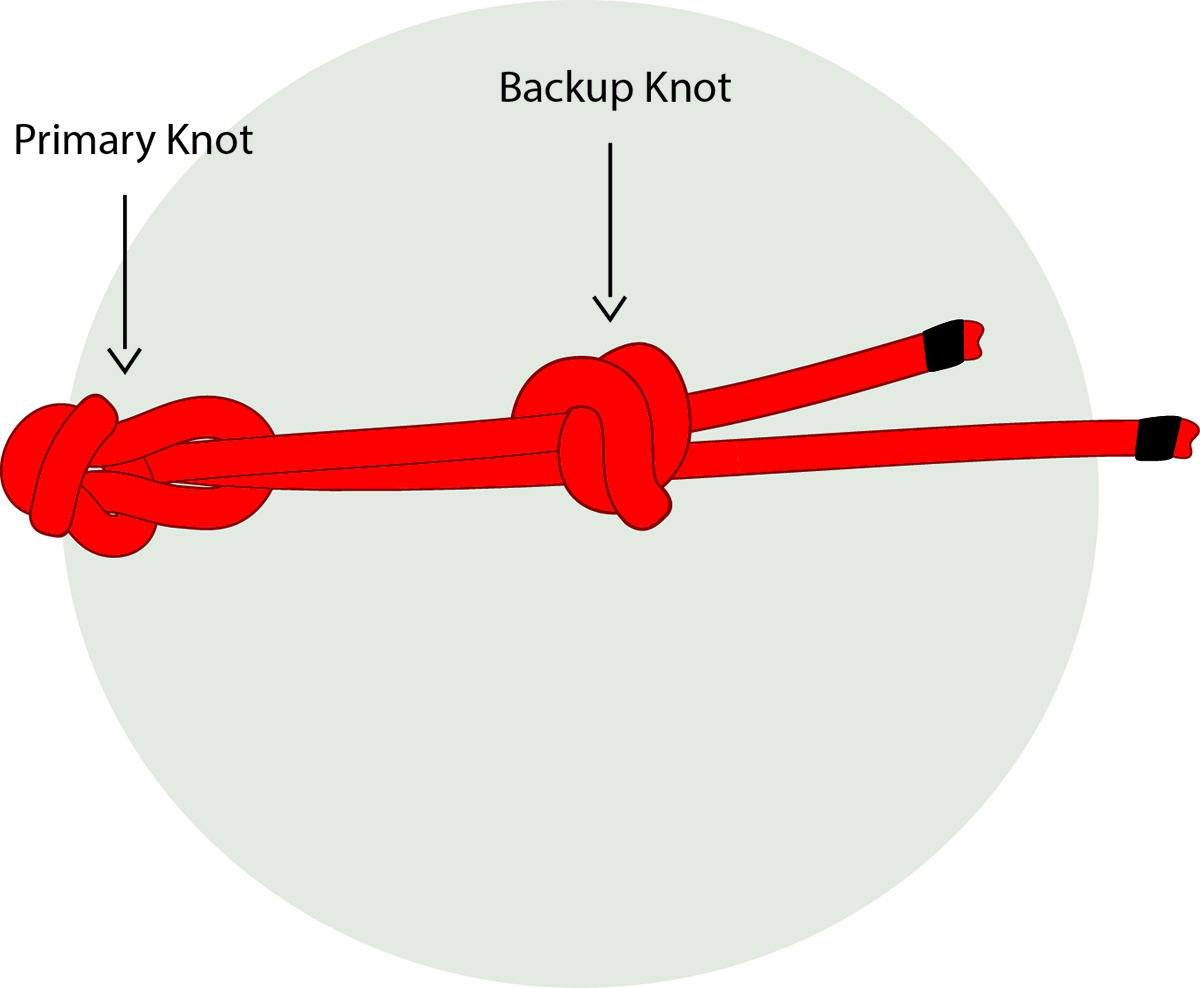
A step-by-step guide on tying a backup knot.
Step 1:
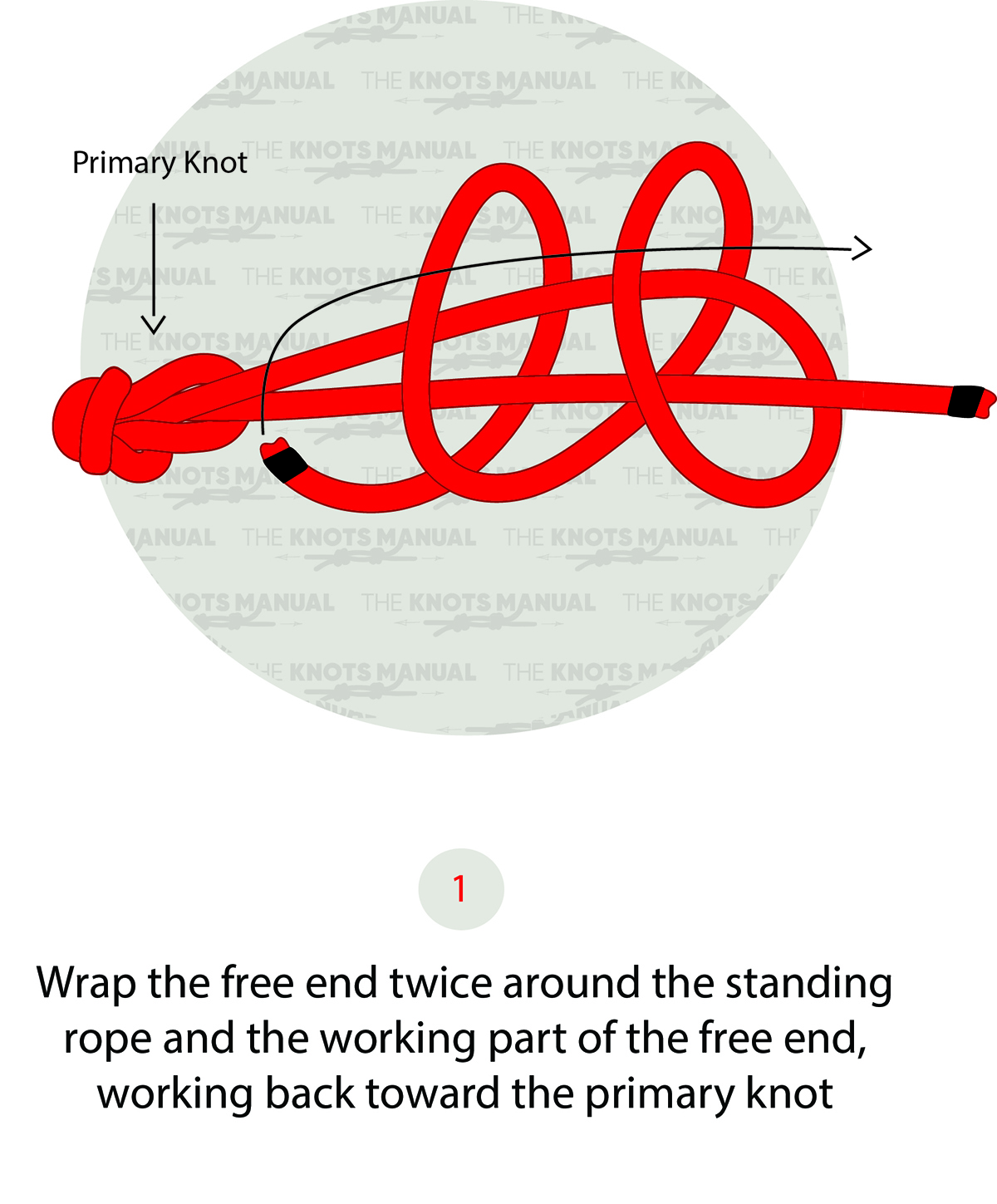
Wrap the working end of the rope around the standing end 2 times, as shown in the illustration above.
Step 2:
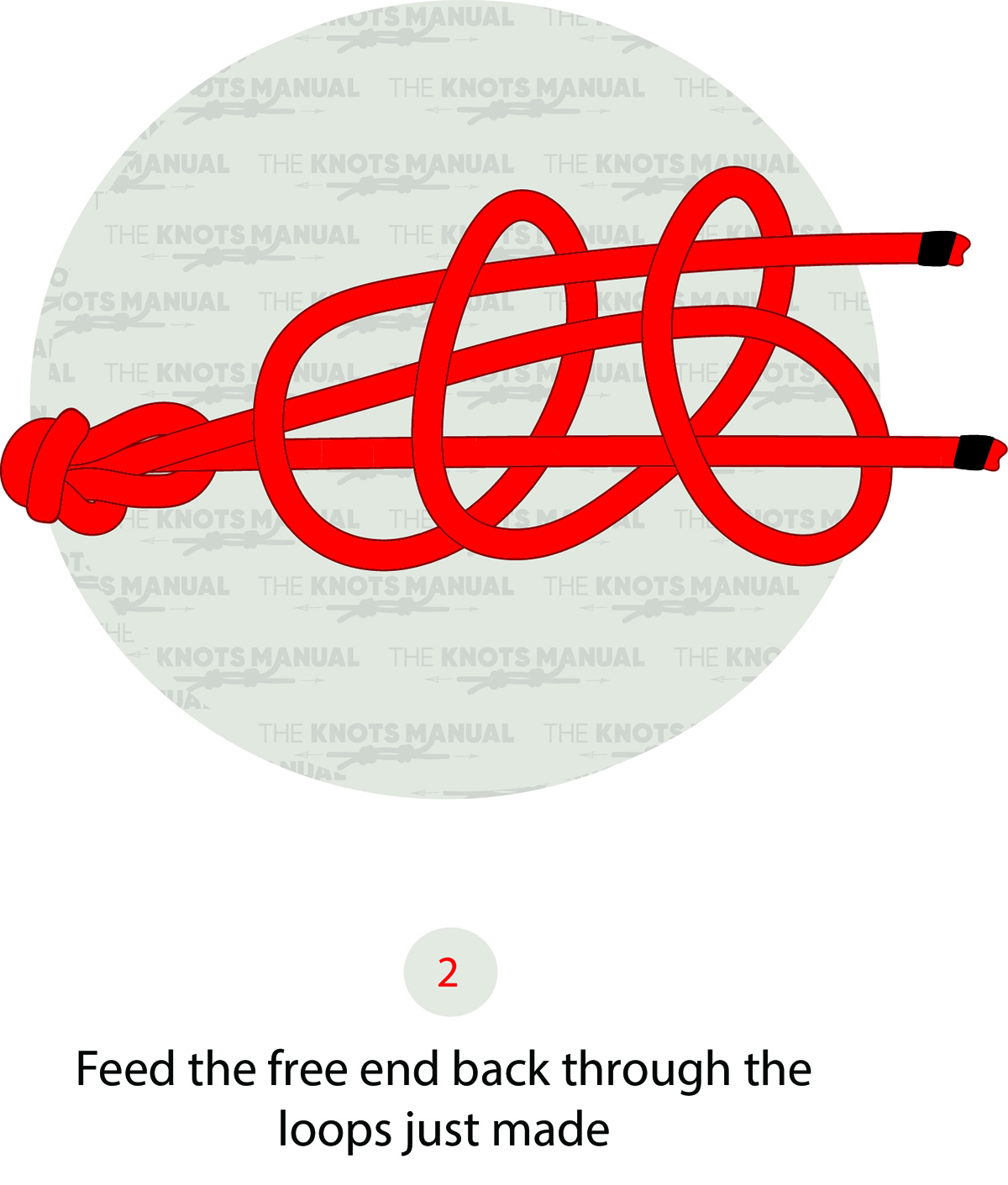
Pass the working end through both formed loops.
Step 3:
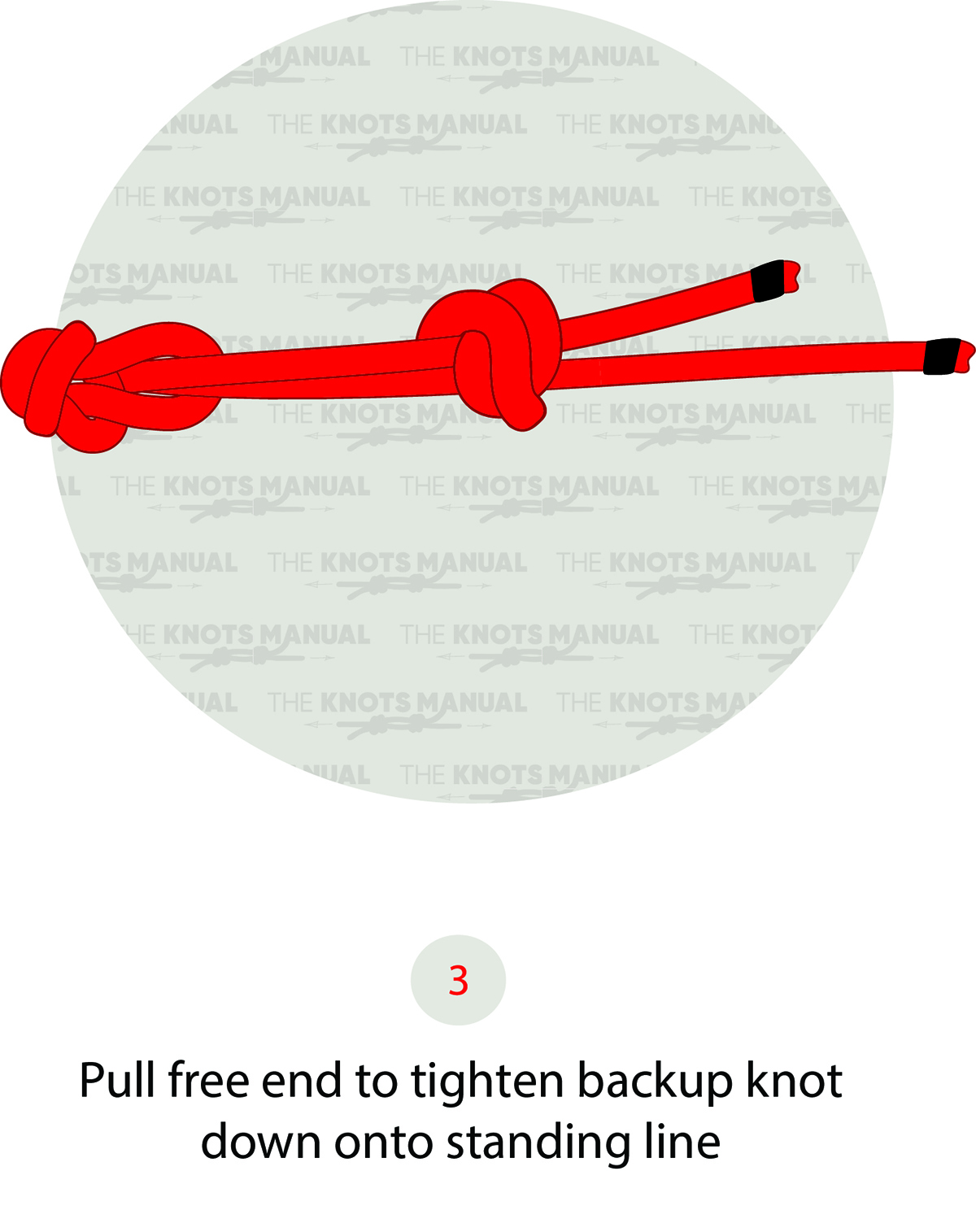
Tighten the knot by pulling the working end opposite the main knot.
